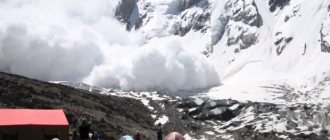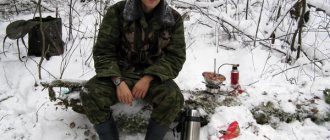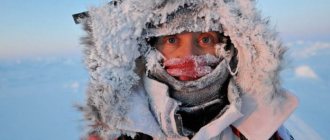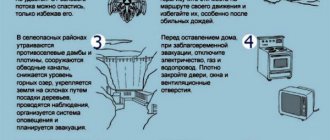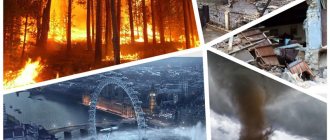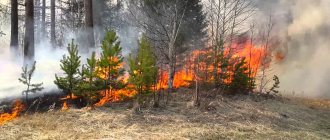Mont Tremblant, Vail, Zermatt, Kitzbühel, Are you familiar with these names? I think that most do not understand what we are talking about, but some saw in these names their favorite vacation spots, because these are some of the most popular ski resorts in the world. Today, many people prefer to spend time doing extreme sports, as they say, being “on the wave.”
Ski resorts offer clean air and magnificent mountain scenery, but do not forget to be vigilant; where there is snow and large snow-capped mountains, there is a possibility of avalanches.
In our article we want to tell you as much as possible about avalanches and what to do if you are suddenly threatened by an avalanche.
Why is an avalanche dangerous?
A snow avalanche has great crushing force, sweeping away everything in its path at high speed. Including residential buildings located at the foot of the mountains, claiming many human lives. Destroys infrastructure and fills up roads (Figure 1).
By scientific definition, a snow avalanche is a huge mass of snow falling from the mountains. It moves along the slope, encountering virtually no obstacles along the way, and the nature of the damage caused to infrastructure directly depends on the location of the avalanche and the volume of snow.
Once in an avalanche, there is little chance of survival because the layers of snow are so heavy that upon impact they immediately break bones, leading to death. If a person is quickly found and provided with qualified medical care, he will be able to survive, but it is possible that he will remain disabled.
Figure 1. Snow avalanche - a dangerous natural phenomenon
Often the victims are ski lovers, climbers and snowboarders who, by chance, find themselves at the wrong time, in the wrong place, or, being careless, decide to risk going down a dangerous slope.
Recommendations for the threat of an avalanche
- Refrain from hiking;
- Avoid dangerous slopes. You cannot cross them or move in a zigzag, as this can “cut” the snow cover, disrupt the adhesion of the snow to the underlying surface and cause an avalanche. It is best to move along the slope straight up, or at least obliquely.
- Do not go to the mountains after heavy snowfalls for 2-3 days;
- It is recommended to stay in a group of more than 3 people;
- When going out into the mountains, it is advisable to take with you an avalanche transceiver, a mobile phone so that rescuers have the opportunity to find a person covered in snow, as well as special avalanche backpacks;
- It is not recommended to step on snow ledges.

Calculating the risk of avalanches
In avalanche-prone areas, specialists monitor the accumulation of snow, often artificially causing snow masses to melt, build protective structures, and specially trained people are always ready to help (Figure 4).

Figure 4. When in the mountains, avalanche warnings must not be ignored
When planning a hike in the mountains to avoid a snowstorm, you need to be prudent and take the necessary precautions.
Rescuers recommend always following these recommendations:
- If it is snowing, raining or strong wind is blowing, it is better to postpone the walk until the weather is good.
- If you are already in the mountains, be careful and monitor changing weather conditions.
- Study the area in advance, asking experts where avalanches may occur along the planned route.
- If you find out about such places, avoid them. Ask how to get around them.
- If you notice small landslides, then it is better not to go to the mountains - this indicates that the snow is loose and the air humidity is high.
- Remember: if the slope is more than 20 degrees and there are no trees and bushes on it, then it is better to go around it - there is a possibility of large masses of snow sliding down. After a snowfall, such a slope can only be crossed after 3 days.
- Even in good weather, you should not cross ravines with a slope of more than 30 degrees.
- The most dangerous period for avalanches is spring and summer.
- Slopes with hanging snow cornices should be avoided.
- You can do tests to check the strength of the snow cover.
- Go back along the same road you walked on.
- Don't shout loudly while in the mountains.
When going to the mountains, it is important to go with an experienced leader, to have avalanche equipment with you for protection and to know how to use it. It is also important to securely fasten the safety rope.
By following safety rules and anticipating all risks, you can enjoy your trip and return home safely.
Avalanche conditions and types of avalanches
Avalanche conditions in the mountains are highly dependent on the weather. Certain weather conditions can be called avalanche harbingers.
So, within 24 hours after heavy snowfall, there is a high risk of a dry avalanche (from fresh snow).
When there is a thaw, there is a threat of a wet avalanche (snow landslide). Because in such weather, water forms between the ground and snow or between layers of snow, which is a lubricant that allows the snow to move. A wet avalanche even falls on the ground.

Photo by Anton Shestakov. Removal of the canopy from the Akkem wall (Mount Belukha)
During strong winds, the cornices are inflated - superchargers, which break off when they reach their critical mass.
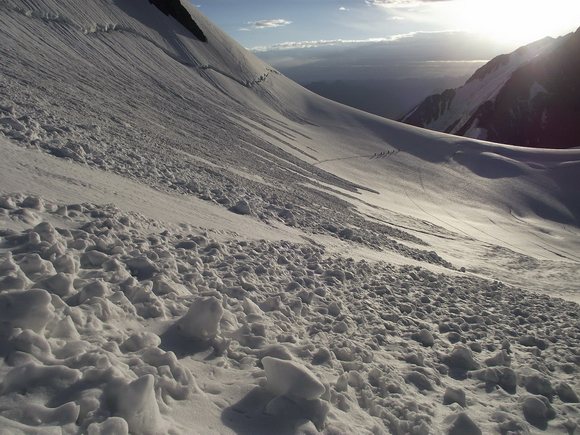
Photo by Dmitry Ryumkin. Avalanche trail
Planks are a special type of snow avalanche. The top layer of snow slides over the bottom, because between them is a layer of unstable grain. A minor external impact is enough: a person leaving, a sharp sound, a rockfall. The boards can come down in any weather.
The most avalanche-prone slopes are slopes with a steepness of 20 to 50 degrees. On flatter slopes, avalanches are less likely. On steep slopes, the snow does not accumulate, it melts away immediately. Usually they are always naked, but sometimes they form supercharged visors, which can come off at any time.

Photo by Dmitry Ryumkin. The fallen boards blocked our path
It is impossible to assess avalanche danger 100%. It's always there on the slopes. Boards are generally unpredictable.
Features of behavior when caught in an avalanche
If you find yourself in an avalanche, you should not panic; it is important to remain calm in such a difficult situation. You should also not scream (for example, call for help) because you might swallow snow. Remember that your behavior determines your life and the severity of health consequences (Figure 5).
In order to preserve oxygen as much as possible and survive until rescuers arrive, you must strictly follow this action plan in the event of an avalanche:
- Cover your nose and mouth with a sleeve, glove, or scarf to protect your respiratory tract from snow.
- Group up, bend into a ball, so that the snow mass does not break your bones at the first blow, taking a horizontal position.
- If you find yourself in a snow storm, try with all your might to stay on the surface and move to the edge where the speed is lower.
- Throw away everything that can be pulled into the depths of the snow (skis, poles, snowboard).
- Try to grab a support (for example, a layer of snow) so as not to be dragged into the depths.
- When the avalanche has stopped, the first thing you need to do is create air space around yourself, trampling the snow with your feet so that you can breathe.
- If possible, determine where the top or bottom is and get out if your health allows. To do this, just spit in front of your face. If the saliva falls down, then the surface is at the top, and vice versa. If you feel that something has been broken, it is better to wait for help, saving oxygen.
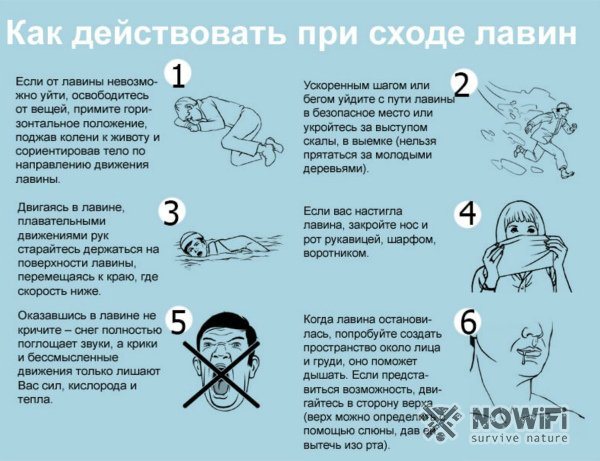
Knowing the basic rules of behavior, you can survive if you find yourself in such difficult situations. Some experienced athletes managed to stay alive thanks to good preparation and technique, but most likely simple chance played a role here.
Rules for searching for people under an avalanche
If you saw an avalanche occur or were even able to get out of it on your own, first of all, report the incident to the administration of the nearest locality. There they organize the search and rescue of other victims (Figure 6).
In addition, when going to the mountains, you should always have avalanche equipment with you and know how to use it. Yes, it is expensive, but do not spare money for this, it can save someone's life. Usually, before going to the mountains, at ski resorts, beginners are given instructions on how to use the equipment and how to behave in difficult situations. Listen carefully, this is important and remember, it can save your life.
Here is a list of equipment that you should always have with you:
- Avalanche transceiver - it must be turned on. Thanks to its signal, it is easier to detect a person in the depths of the snow and provide assistance.
- A shovel is needed to dig out those who are in the snow.
- Avalanche probe - speeds up the search process. With its help, you can determine the depth of the victims.
- Float backpack - in the event of a shock wave, it automatically deploys, like airbags in a car. Keeps a person on the surface, preventing him from getting buried in the snow so that it is easy for him to get out on his own.
When going to the mountains, you should always take with you a map of the area, a flashlight, a compass and a first aid kit. If the search for victims has already been organized, it is better to use sniffer dogs to find the person as quickly as possible if he did not have a sensor with a signal to detect his location. The dogs do the same job as the 30 rescuers.
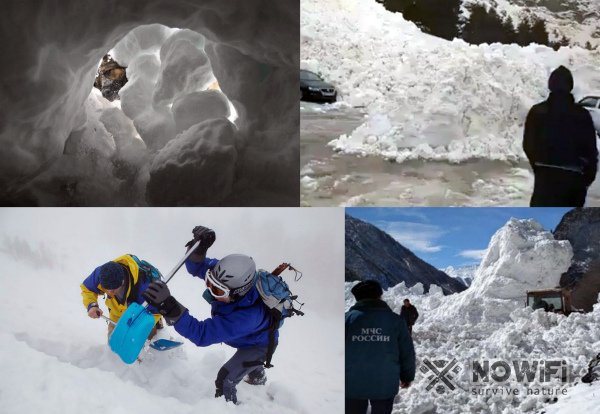
Figure 6. Only qualified rescuers should search for victims
You need to act coordinatedly and quickly in order to find everyone who is covered in snow in the shortest possible time. To do this, you need to listen to specialists, obey them, without relying on your own intelligence and abilities. They are more competent in such situations.
How to avoid getting caught in an avalanche
Subscribe:
Telegram, Facebook, OK.ru, VKontakte
The most common causes of avalanches are a skier descending or a loud scream. On February 27, a group of skiers was caught in an avalanche in Krasnaya Polyana. Three tourists were taken to hospital with injuries of varying severity, one woman died. The Southern Regional Search and Rescue Team reported that all of the injured skiers were skiing off the marked trails. Despite the fact that rescuers arrived quickly, they were unable to lift the 45-year-old tourist from Moscow alive from under the snow. A few days earlier, on February 22, 2008, in the Orenburg region, two boys, sledding down the mountain, were killed in an avalanche.
Where do avalanches come from?
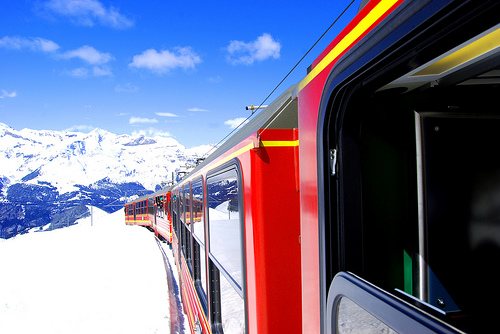
For an avalanche to occur, only three components are needed: a lot of snow, as happens in winter, a fairly steep slope and instability of the snow on it. One of the most common causes of misfortune is a skier descending or shouting loudly. So an avalanche can overtake us even very close to our house, let alone a trip to the mountains. However, you should not change ski boots that are not “white slippers” in advance. With caution and following simple safety rules, mountain tourism can be a lot of fun.
Why do you need a beeper?
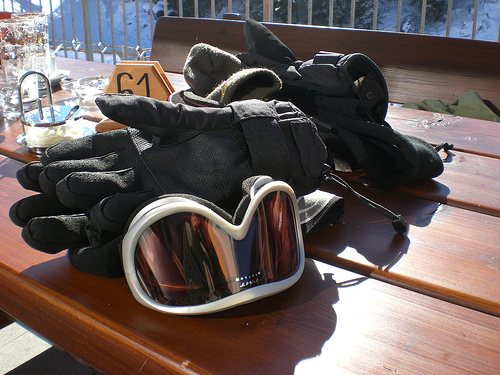
Before skiing or traveling in the mountains, you should consider purchasing or renting an avalanche blower. This device is designed to search for people caught in an avalanche and helps speed up rescue efforts. Without a beepper, it is often impossible to locate the victim. The transmitting beacon operates at a frequency of 457 kHz (on which the signal passes best through dense layers of snow). The device must be checked every day before leaving the hotel or campsite and turned on on the slopes.
The presence of a beepper, of course, does not make a person invulnerable; avalanches sweep away everything in their path and can reach speeds of 300 kilometers per hour. A person caught in an avalanche rushes along with a huge mass of snow, stones and broken trees, turning over and colliding with obstacles and eventually finds himself under a thick layer of snow. It seems that it is simply impossible to survive in such conditions.
Meanwhile, the chances of surviving an avalanche are quite high. There have been cases when people spent two, three days and even a week under snowfall. The survival record was set by the Austrian Freisegger, a cable car worker in the Alps, who, wearing only his underwear and wrapped in a blanket, was caught in an avalanche that demolished the station. Rescuers did not immediately find him, because repeated avalanches filled up the station, and no one could even think that someone could survive under such a thickness of snow. Freisegger was saved by the desire to live and a sliver of wood that came to hand in time. He shoveled the snow towards the sounds that occasionally reached him, and eventually was able to stick his hand to the surface. He was noticed by porters delivering food to rescuers. The Austrian spent 300 hours under the avalanche.
Why do people die under the snow?
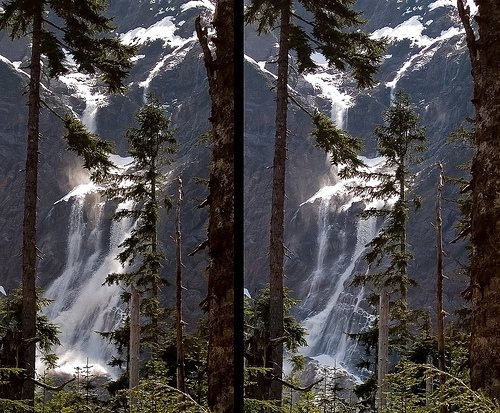
The main danger during an avalanche is suffocation. Vortex flows in it create zones of expansion and compression, snow dust penetrates the respiratory tract, and if a person does not suffocate, spinning in a snow whirlwind, then when the avalanche body stops, the compacting snow compresses the throat and chest, presses the face into the snow mass, which also leads to to suffocation. The third dangerous moment comes after: the ventilation under the snow blockage is very poor, and the further you go, the more the lack of oxygen begins to be felt. Moreover, from breathing a thin ice crust forms on the walls of the snow chamber, which reduces the already small flow of fresh air to the buried. Just 2 minutes after stopping breathing is enough to lose consciousness, and after 8 minutes the changes in the brain become irreversible and the person dies.
Sometimes people die in an avalanche when there is only half a meter or a meter of snow above them. This seems strange, because we are used to the fact that snow is weightless. But the apparent lightness of the snow is deceptive. To climb out from a depth of one meter, a person needs to overcome a weight of 150 to 300 kilograms, depending on how high the humidity of the snow is. Since all the mass is interconnected, in fact, in order to get out, you need to put in even more effort, and this is beyond the power of even weightlifting champions, since the count is already in the tons. The snow in a stopped avalanche quickly freezes, it cannot be dug up with your hands, it is so hard that you can only dig out a person caught in an avalanche with special shovels.
Search teams, equipped with radio direction finders, dogs, and all kinds of equipment, exist at all tourist mountain resorts, but even with a wealth of experience in rescue work, they are not always able to find and come to the aid of the victims on time.
So the most reliable way to survive an avalanche is always to try to avoid it. Typically, tourists and skiers who come to the mountains in winter must undergo special instructions, but, unfortunately, this rule is not observed everywhere. Not to mention the huge number of “savages” who have no one to read the safety rules. Meanwhile, in 90% of accidents, the victims themselves are to blame for driving or going onto a dangerous slope.
How to identify a dangerous slope

Avalanche danger also depends on the depth of the snow cover. With a depth of up to 30 centimeters, the lowest degree is I, II - up to 50 centimeters, III - 70, IV - one meter and the highest degree, which is considered catastrophic - more than 1.2 meters.
A sure sign of an avalanche-prone area is the presence of avalanche cones or clearings in the forest on the slope. Avalanches occur mainly in the same places year after year, and trying to ride in such a place is clearly suicide. Although it is the avalanche cone that is the most attractive place for skiers and snowboarders: it is flat, without rocks and trees - all this has long been carried down by tons of snow. At ski resorts, such cones are monitored; after snowfalls, avalanches are released with directed explosions, slopes are rolled by machines and safe routes are laid.
As for skiing time, December, when the snow has just fallen, is relatively safe, January is also good, but the most attractive for skiers and snowboarders are February and March, when repeatedly fallen snow melts, forms a hard board, again covered with fluffy snow. These two months collect the lion's share of deaths. It is at this time that “snow boards” are formed, when a deep layer of snow has recrystallized into large ice needles, on which lies a dense mass of compacted top layer, ready at any moment to break off and begin to slide down, dragging the unwary with it.
The easiest way to protect yourself is not to go out for a ride immediately after heavy repeated snowfall, avoid small ravines, ravines and valleys with steep slopes, places that have only recently been illuminated by the sun: before noon, ride in shaded places, and after that - in those that are already were illuminated by the sun in the morning. And, of course, ride only on marked trails, the safety of which is checked daily by rescuers.
If a skier is accidentally carried into an avalanche zone, they should go down such a slope very carefully and at a slope of 8-12 degrees. Before descending, be sure to cover your face with a scarf or windproof mask and fasten your collar. If you have a backpack, you need to keep it in such a way that you can get rid of it instantly. The ski bindings are loosened or unfastened, and the hands are freed from the lanyards of the ski poles. If possible, it is better to climb up, sticking to the prominent landforms or taking refuge under the protection of rocky ledges.
If you get caught in an avalanche

Analysis of the actions of people who survived the avalanche allowed specialists to create a diagram of the right steps. True, the main factor of survival here is the ability to quickly react to what is happening and change tactics at different stages of the movement.
1. If the snow cracks threateningly and begins to move, picking up speed, down high enough above the person and there is a chance to escape, move to the side, it is necessary to use it and, leaving the path of the avalanche as quickly as possible, gain a foothold in a safe place.
2. If you find yourself in an avalanche at the very beginning, you need to gain a foothold in place and stay on the slope at all costs - hold on to a tree, take cover behind a rocky ledge, stick sticks deep into the snow, stand in such a way as to create the least resistance and try to pass the snow around you or even above yourself.
3. If an avalanche does overtake the victim, the first thing to do is to protect the lungs and throat from snow dust. Cover your nose and mouth with a scarf, hat, hood, mittens, or just your palms and try, if possible, to keep your head in the direction of the snow. It is very important to be able to orient yourself in space and try to stay as close to the surface of the snow as possible. In such cases, experts recommend using swimming skills to “surface” to the surface, but, alas, this is not always possible.
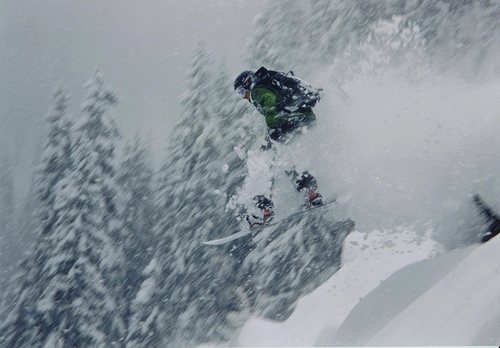
4. At the moment of braking of an avalanche, a person must do everything possible to get to the surface or at least get closer to it, since the snow hardens and freezes very quickly and there may not be another chance. If you can’t get up, you need to shovel and squeeze the snow away from your face as far as possible, if possible create a snow chamber for yourself and try to destroy the ice crust that forms on its walls due to breathing and heat generated by the body.
5. Screaming under snow is useless. Under the snow, you can clearly hear what is happening on the surface, but from the surface, rescuers have almost never been able to hear not only screams, but even shots. Only if people are directly above the victim does the person have a chance to be heard from under the thickness of the snow. So the victim can only wait and hope that he will be saved.
In the West, there are special avalanche schools in which everyone is taught the principles of winter safety in the mountains. There is such a school in Moscow, at the training center of the Russian Alpine Skiing and Snowboard Federation. Having completed training there, any tourist or skier will learn exactly what factors play a decisive role in the formation of avalanches, learn how to analyze the area for safety, assess the degree of risk, and gain rescue skills when caught in an avalanche. Theoretical classes take place in Moscow, and the practical course in the mountains - Krasnaya Polyana, Elbrus, Kamchatka. By the way, it must be said that it is the Elbrus region that is the most dangerous ski resort in Russia in terms of avalanches; here even both lower lift platforms, Chigetskaya and Azau, are in an avalanche zone, and avalanches occur on them at least once a season. Author: Vitaly Mirov
Join us! It's not boring with us:
Telegram, Facebook, , VKontakte
Topics: extreme
Passing through avalanche-prone areas.
General rules:
- first we think, then we go
- It’s better to walk an extra kilometer than to dig out an avalanche
- It's better to pass at night than to stay for life
- if it is possible to bypass a dangerous area, bypass
- the most experienced one takes risks (commander)
- observation required (insurance)
- avalanche equipment at the beginning and end of the group
- Avalanche bands unfurl before entering a dangerous area
Rules for overcoming an avalanche area:
- choose the most convenient and safe way
- put on warm clothes, unfasten the belts of your backpacks, and when traversing, carry your backpack on the shoulder outer to the slope;
- tie an avalanche ribbon and unravel it. Do not neglect this at the slightest danger, which could lead to death;
- prepare avalanche equipment and distribute it among the trail runners;
- agree on actions, appoint observers, follow each other;
- cross a dangerous slope one at a time, a small interval leads to overload of the slope;
- ascent and descent - strictly vertically, head-on;
- in particularly dangerous places, provide insurance.
The observers' task is to monitor the slope and warn about the occurrence of an avalanche, monitor the participant and his actions and record the place of his disappearance in the avalanche
Movement through the valleys:
- assess the situation visually and on the map: identify places where avalanches can occur and the possible affected area
- outline a path on which the group will be exposed to minimal danger
- if you need to cross dangerous areas, do it one at a time, in compliance with the rules
- The bivouac site is selected with a safety margin in case of heavy snowfall and detention
Slopes:
- head-on climb, without skis, under the cover of rocks, along rocks
- traversing a slope overloaded with snow is unacceptable
- if there are no other route options, cross the slope at the top, strictly one at a time
- descent: possible on foot or skis
Descent down an avalanche slope:
- test the slope: release a “live bait” on the belay in order to collapse the cornice and trigger an avalanche - trample a horizontal trench below the ridge, where the maximum accumulation of blizzard snow
- descent on foot along the line of falling water, one at a time, to a safe place
- ski descent, tack one at a time, the turn point is in a safe place, where the whole group gathers
- avoid negative forms of relief: troughs, hollows, flattening on a slope
Corridors: can only be crossed in compliance with the rules.
Choosing a safe place to bivouac:
- You cannot stand in depressions of the relief and at the foot of the slope
- the forest is not always a guarantee of avalanche safety
- consider the possibility of being hit by a bouncing avalanche
Dangerous avalanches: how to behave?
In an avalanche-prone area, the risk must be reduced. We must remember that the steepness of the slope, heavy snowfall, rain, warming are factors that increase the risk of an avalanche.
Some false ideas become dogmas. Intense frost is not a stabilizing factor for snow. If the cold was preceded by warming, there is no stabilization effect. Professionals (in particular, rescuers) are always ready to provide the necessary information. By constantly monitoring the snow cover, they will talk about the stability of the snow.
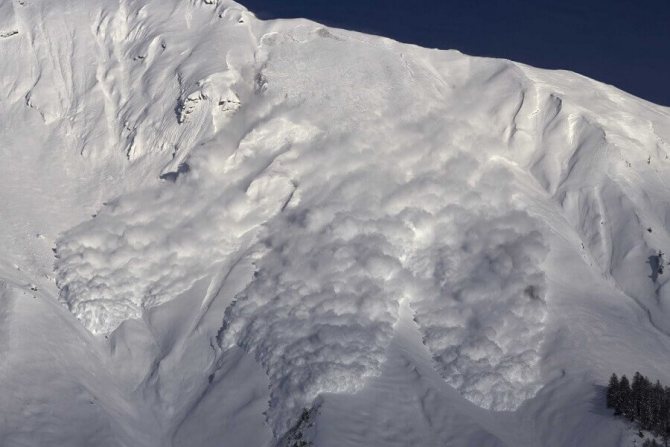
- You cannot rush headlong down, jumping from ridges and cornices. If there is any doubt about the snow, it is better to make an extra loop and settle for a less interesting descent to avoid the danger of an avalanche.
- You should never rush onto an unknown path, even if it looks like it inspires confidence. In fact, when trying a new route, you may end up in an avalanche.
- Do not ski on slopes with hanging snow cornices.
- You never need to ride through virgin lands alone, or return along a road you’ve already traveled.
- Don't skimp on purchasing a transmitter-receiver. It will help you quickly detect yourself and survive in an avalanche.
- In a group: never ride in a crowd and do not stop in the way of those following.
- Do not shout loudly if there is a possible danger of avalanches. Even such a small carelessness can lead to undesirable consequences.
The chances of a person being caught in an avalanche rapidly decrease over time. The statistics are cruel: only 80% of people can survive an avalanche. Then every hour the chances are cut in half. So, the time factor is paramount. Classic search tools - probing, bloodhounds - are used if the victim does not have a detection system. Dogs do the same job as 30 rescuers; they are indispensable in terms of speed of implementation. Today, the market offers electronic devices that help find people caught in an avalanche.
Note: snow has low sound conductivity, so rescuers are unlikely to hear cries for help. It is necessary to remember about psychological balance and not to panic. There have been cases when a person was found under an avalanche on the thirteenth day!
Landforms
“Any snow-covered slope steeper than 15 degrees is potentially avalanche dangerous”
Ridges: they often form cornices, the collapse of which can cause an avalanche from the underlying slope
Slopes:
- snow accumulation zone
- transit zone (erosion cuts, couloirs, hollows)
- deposition zone (small avalanches of wet snow often stop during flattening)
Valley bottom:
- transit zone (with a large slope and a significant size of the avalanche)
- deposition zone: the range of an avalanche release depends on the height difference, the steepness of the slope, the volume of the avalanche and its type (dry or wet). For an approximate (tourist) assessment, we can assume that the ejection range is equal to half the height of the slope (counted from the foot)
